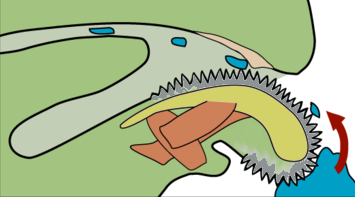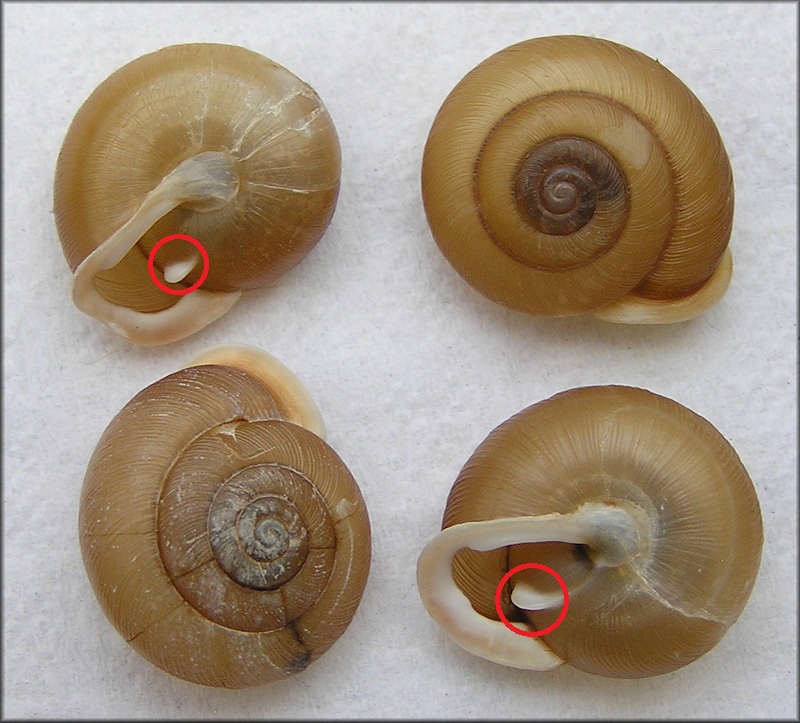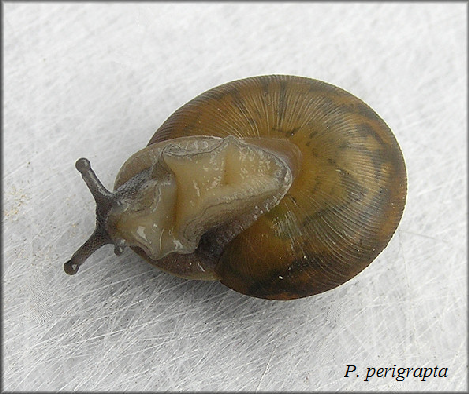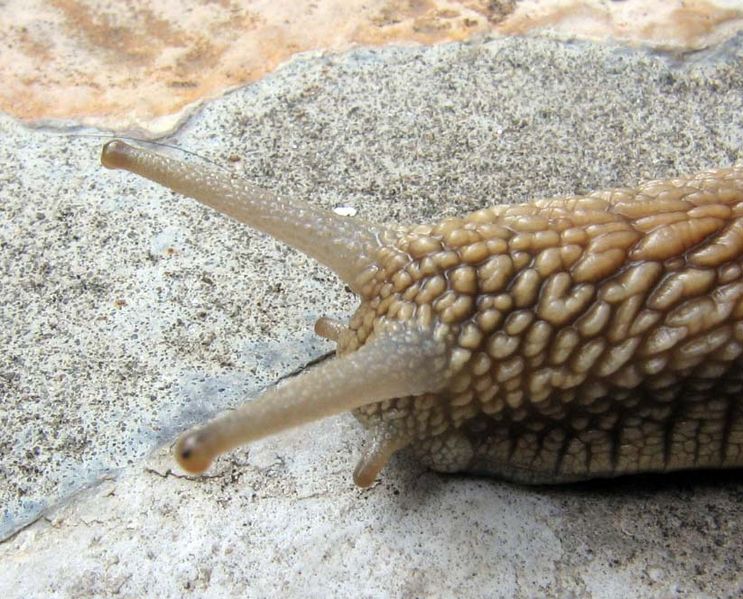Adaptation
Patera perigrapta has many adaptations that are similar to other snails in the class Gastropoda. Such adaptations include:
Radula:
The radula, which is shown below, is a structure which is made out of a hard material called chitin. It allows the snail to scrape off food particles as it crawls (Burch, 1962). This ribbon-like structure is pushed though the mouth by muscles when the snail is feeding (Burch, 1962).
* To learn about about how the snail eats, go to Nutrition.
Shell:
The shell covers and protects the snail’s internal organs from predators, environmental conditions or any other forms of injury that may occur (Burch, 1962). The shell is composed of calcium mineral sediments that are produced from the outer part of the mantle Cavity (Gillis, 2012).
The photo above shows the depressed helicid shell of Patera perigrapta. The tooth is indicated with a red circle around it. The Aperture of the shell simply is referring to the shell's opening.
* For more information on snail shells, go the the Facts Page.
Teeth and Aperture barriers:
The teeth, which act as a protection barrier, are located near the snail’s shell opening (Dourson, 2010). The teeth can also store calcium, which can be used for repairing any damage that could occur to the shell (Dourson, 2010). In addition, the teeth can help the snail balance itself as it moves, by acting as a pivotal point (Dourson, 2010).
Ventral Muscular Foot:
The muscular foot is very important for the locomotion of the organism (Gillis, 2012). Not only is it used for movement, but it can also be used for attachment to a substrate or in aiding the attainment of food (Gillis, 2012).
Tentacles:
Being a member of Stylommatophora, Patera perigrapta has two pairs of tentacles (Burch, 1962). The top set has eyeballs on the tips, which are very useful for viewing its surroundings (Hickman, 2012). Since the complexity of the eyeballs limits the snail's vision to merely distinguishing between light and darkness, the bottom set of tentacles have photo-sensory cells that allow the snail to feel it's surroundings and sense chemicals around it (Hickman, 2012). Not only does the bottom set of tentacles allow the snail to feel it's way around, but it also compensates for the fact that snails lack ears by allowing the snail to sense vibrations in it's environment (Hickman, 2012).
Facts! Nutrition MultipleOrganims.net Wisconsin Land Snail Page




